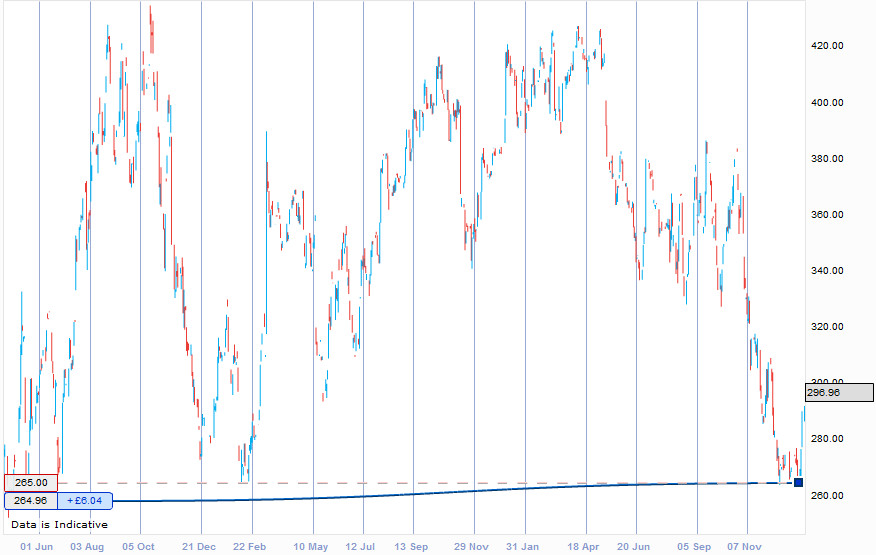How to Catch a Falling Knife, and How Not!
Jan 18, 2012 at 4:43 pm in Trading Mistakes by
Many first-time spread bettors and even first-time investors are fond of trying to catch falling knives. It’s generally frowned upon in trading and investing circles, because when you try to catch falling knives the chances are good that you will be cut to shreds. Well, I’ve been around this block a few times and yet I still have a fondness for trying to catch those knives.
So is it safe, or not?
It depends how you do it.
How NOT To Catch a Falling Knife
I believe that many people end up in the trading equivalent of the hospital emergency room because they try to catch those falling knives like this:
- With too firm a grip; i.e. a big position size.
- With more than one hand; by grasping a second time (“averaging down”) with the other hand as the knife is slipping through the first.
- With no intention of letting go when the cuts start to hurt.
- With no indication that the knife has actually hit the floor and is therefore likely to bounce back up.
If you tried to catch a real knife like this, you’d not be surprised to find yourself with a few severed digits. If you try to catch a falling stock like this, don’t be surprised if it knocks a few digits off your trading funds.
How To Catch a Falling Knife
Here are my top tips for trying to catch a falling knife (or stock) safely:
- Try to catch a knife that has fallen rather than one which is still falling. Has it started to bounce from the floor, or is it very close to the floor as indicated by a previous price support level?
- Grab gingerly at first, with the light grip of a small position size. If you suffer a cut, it won’t be too deep.
- If the knife keeps falling, let go quickly with a view to trying again when it is closer to the floor. A stop order can act as your “letting go” instinct.
- When you’ve got a firm hold, then — and only then — you can tighten your grip by pyramiding your position size as you lift this fallen knife from the floor.
A Nice Catch!
Here’s one I caught earlier. What a nice catch!:
Notice how in this case, Tullet Prebon bounced nicely when it hit the floor defined by the support level. With my stop order now at break even, I simply can’t lose, and if it heads higher I might invest some more.
While it is generally recommended to grab hold only once a price has begun to rebound decisively upwards, in my experience it is usually better to grab a little sooner on a leap of faith. You see, now that the price has rebounded decisively (at the end of the chart) it may be ripe for another fall. And then you won’t know what to do.
Tony Loton is a private trader, and author of the book “Position Trading” (Second Edition) published by LOTONtech.


